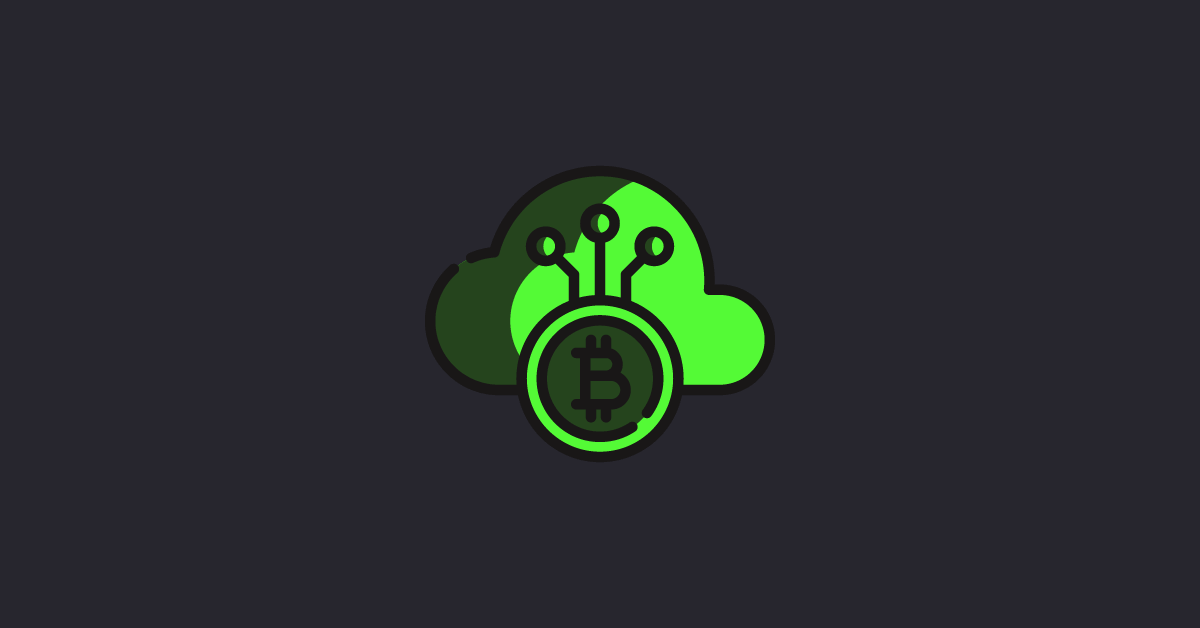


What is Ethereum?
- By Kriss
- Published on: January 23, 2021
Ethereum is an open-source, decentralized blockchain with smart contract capability. The platform’s native cryptocurrency is Ether (ETH). By market capitalization, it is the second-largest cryptocurrency behind Bitcoin. The most widely utilized blockchain is Ethereum.
Ethereum has begun implementing a set of modifications known as Ethereum 2.0, which include a move to proof of stake and the use of sharding to increase transaction throughput.
Ethereum was first presented in a white paper in late 2013 by Vitalik Buterin, a programmer and co-founder of Bitcoin Magazine, with the purpose of allowing developers to create decentralized apps. Buterin suggested that Bitcoin and blockchain technology could be used for more than just money, and that a scripting language was needed for application development, which might lead to real-world assets like stocks and property being linked to the blockchain. Buterin collaborated on the Colored Coins project with eToro CEO Yoni Assia in 2013, drafting a white paper explaining potential use cases for blockchain technology. He recommended the development of a new platform with a more generic scripting language, which would later become Ethereum, after failing to reach agreement on how the project should proceed.
In January 2014, Ethereum was announced during the North American Bitcoin Conference in Miami. A group of people from Toronto, including Gavin Wood, Charles Hoskinson, and Anthony Di Iorio, rented a house in Miami at the same time as the conference. Di Iorio enlisted the help of a friend, Joseph Lubin, who in turn enlisted the help of reporter Morgen Peck. Six months later, the founders reconvened in a residence in Zug, Switzerland, where Buterin informed them that the project would move forward as a non-profit. At that point, Hoskinson walked away from the project.
The list of Ethereum’s founders is particularly large. Anthony Di Iorio penned the following: “In December 2013, Vitalik Buterin, myself, Charles Hoskinson, Mihai Alisie, and Amir Chetrit (the original 5) founded Ethereum. In early 2014, Joseph Lubin, Gavin Wood, and Jeffrey Wilcke were added as founders.” The program was formally developed in early 2014 by Ethereum Switzerland GmbH (EthSuisse), a Swiss corporation. Before the software could be deployed, the basic concept of putting executable smart contracts on the blockchain had to be defined. Gavin Wood, then the chief technical officer, did this work in the Ethereum Yellow Paper, which defined the Ethereum Virtual Machine. Following that, the Ethereum Foundation (Stiftung Ethereum), a Swiss non-profit organization, was established. From July through August 2014, an online public crowdsale was held, with participants purchasing the Ethereum value token (Ether) with Bitcoin, another digital currency. While the technical advancements of Ethereum were first lauded, concerns regarding its security and scalability were raised.
Virgil Griffith, an Ethereum Foundation employee, was arrested by the US authorities in 2019 for speaking at a blockchain conference in North Korea.
Ethereum 2.0
Ethereum 2.0, or Eth2, is a substantial upgrade to Ethereum that is currently being developed open-source. The major goal of the update is to boost the network’s transaction throughput from around 15 transactions per second to tens of thousands of transactions per second.
The idea is to boost throughput by dividing the workload into multiple blockchains that run in parallel (a process known as sharding) and then having them all share a common consensus proof of stake blockchain, so that tampering with one chain would require tampering with the common consensus, which would cost the attacker far more money than they could ever gain from the attack.
The launch of Ethereum 2.0 (also known as Serenity) will take place in three stages:
On December 1, 2020, “Phase 0” was released, resulting in the Beacon Chain, a proof-of-stake (PoS) blockchain that will serve as Ethereum 2.0’s core coordination and consensus hub.
In “Phase 1,” shard chains will be created and linked to the Beacon Chain.
The current Ethereum 1.0 chain is intended to become one of the shards of Ethereum 2.0 in “Phase 2,” which will incorporate state execution in the shard chains.
Design
Ethereum is a permissionless, non-hierarchical network of computers (nodes) that create and reach consensus on an ever-growing series of “blocks,” or batches of transactions, referred to as the blockchain. If a block is to be considered valid, it must contain an identifier for the block it must immediately follow in the chain. Ethereum is a permissionless, non-hierarchical network of computers (nodes) that construct and reach consensus on the blockchain, an ever-growing series of “blocks,” or batches of transactions. A block must contain an identifier for the block it must immediately follow in the chain in order to be considered legitimate.
Each node communicates with a small number of other nodes in the network, known as peers. When a node wants to add a new transaction to the blockchain, it transmits it to its peers, who pass it on to their peers, and so on. It spreads throughout the network this manner. Miners keep track of all of these new transactions and utilize them to construct new blocks, which they then send out to the rest of the network. When a node receives a block, it examines the legality of the block as well as all of the transactions included within it, and if they are legitimate, it adds the block to its blockchain and executes all of the transactions contained therein. Due to the non-hierarchical nature of the network, a node may receive competing blocks, resulting in competing chains. The network reaches consensus on the blockchain by applying the “longest chain rule,” which asserts that the canonical chain is the one with the most blocks at any given time. Because miners do not want to waste their computational resources trying to add blocks to a chain that will be abandoned by the network, this rule achieves consensus.
Comparison to Bitcoin
Ethereum is different from Bitcoin, the cryptocurrency with the largest market capitalization as of 2021, in several aspects:
Bitcoin is a singular form of digital money where users can send, receive, and hold only bitcoins. Ethereum is a smart contract platform which allows entities to leverage blockchain technology to create numerous different digital ledgers and can be used to create additional cryptocurrencies that run on top of its blockchain. For example if a user wants to transfer or store the value of dollars on the blockchain, Ethereum could be used to produce tokens that are tied 1:1 with the value of the US dollar (called a stablecoin). Ether can be used to send, receive, and store digital money.
Bitcoin’s sole purpose is to be used as money, but Ethereum’s goal is to be used to operate apps (like the Google Play or Apple App store).
It takes 13 seconds to complete a block, compared to 10 minutes for bitcoin. Ether mining produces new coins at a very regular rate, with exceptions during hard forks, whereas bitcoin mining produces new coins every four years. Ethereum utilizes the Ethash algorithm for proof of work (PoW), which is designed to reduce the advantage of specialized ASICs in mining.
Transaction fees vary according to computational difficulty, bandwidth consumption, and storage requirements (in a mechanism known as gas), whereas bitcoin transactions compete on transaction size in bytes.
In contrast to Bitcoin’s UTXO system, which is more akin to spending currency and receiving change in return, Ethereum uses an accounting system in which values in Wei (the smallest denomination of 1 Ether, 1 ETH = 1018 Wei) are debited from accounts and credited to another.
Applications
The EVM’s instruction set is Turing-complete, Ethereum contracts can perform anything that computer programs can do in general. The creation of fungible (ERC20) and non-fungible (ERC721) tokens with various properties, crowdfunding (e.g. initial coin offerings), decentralized finance, decentralized exchanges, decentralized autonomous organizations (DAOs), games, prediction markets, and verifiably-fair gambling have all been popular uses of Ethereum.
Contract source code
Smart contracts on the Ethereum blockchain are created in high-level programming languages, then compiled to EVM bytecode and deployed. They can be written in Solidity (a language library that is similar to C and JavaScript), Serpent (a Python-like language that has been deprecated), Yul (an intermediate language that can compile to a variety of backends – EVM 1.0, EVM 1.5, and eWASM are planned), LLL (a low-level Lisp-like language), and Mutan (Go-based, but deprecated). Vyper is a research-oriented language that is currently being developed (a strongly-typed Python-derived decidable language). Users can inspect the code and verify that it compiles to the on-chain bytecode by publishing the source code and compiler information along with the activation of the contract.
One disadvantage of implementing smart contracts on a public blockchain is that problems, such as security holes, are apparent to everyone yet cannot be swiftly repaired. The 2016 attack on The DAO, for example, was unable to be rapidly prevented or reversed.
There is continuing study into how to express and prove non-trivial qualities using formal verification. According to a Microsoft Research research, building good smart contracts can be exceedingly challenging in practice, citing The DAO breach as an example. The research analyzed Microsoft’s contract verification tools and stated that a large-scale investigation of publicly available contracts is likely to reveal widespread weaknesses. The research also indicated that the equivalence of a Solidity program and the EVM code can be verified.
Decentralized finance
Decentralized finance (DeFi) is an Ethereum application case. It provides classic financial tools, such as money market funds that allow users to earn interest, in a decentralized framework that is independent of enterprises and governments. MakerDAO and Compound are two examples of DeFi platforms. Uniswap, a decentralized Ethereum token exchange, increased its liquidity from $20 million to $2.9 billion by 2020. Over $11 billion had been invested on various DeFi technologies as of October 2020. Additionally, certain DeFi protocols allow synthetic versions of various assets (such as Bitcoin, gold, and oil) to become available and tradeable on Ethereum, as well as compatible with all of Ethereum’s key wallets and applications, through a process known as “wrapping.”
- Share via

Kiara Sofia Smith
My current focus is blockchain technology and cryptocurrency. One could even call me a blockchain “enthusiast.” I have worked for almost a decade on several financial projects related to the stock market news, fundamental research and technical analysis for several blogs.
Recent Posts


These Major Companies Accept Bitcoin as Payment




